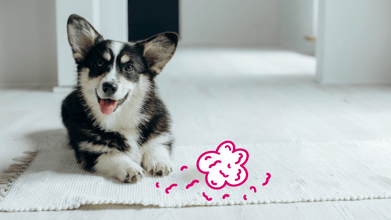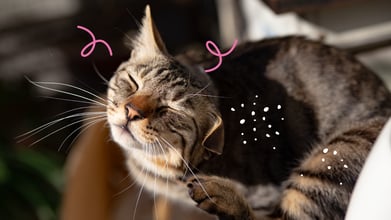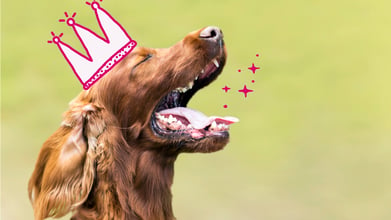Breed-Specific Grooming Requirements for Cats and Dogs

Table of Contents
As a veterinarian, my job is to ensure your pet’s health both inside and out. Regular grooming is essential for maintaining your pet’s external health and well-being. Not only does it help to keep their coat clean and shiny, but it also allows you to check for potential health issues like fleas, ticks, or skin irritations.
Beyond the physical benefits, grooming can provide valuable bonding time with your furry friend. The gentle touch and attention can strengthen your relationship and reduce stress for both of you.
In this comprehensive guide, we'll cover everything you need to know about grooming requirements for cats and dogs, from the basics to breed-specific care. Let's get started!
🔑 Key Takeaways:
-
Regular grooming is essential for both cats and dogs. It helps maintain overall health, prevents various issues, and strengthens your bond with your pet.
-
Tailor your grooming routine to your pet's specific needs. Consider factors like coat type, breed, and lifestyle when determining grooming frequency and techniques.
-
Regular grooming allows you to identify potential health problems, such as skin irritations, ear infections, or dental issues, at an early stage.
-
Invest in quality grooming supplies. Using the right tools will make the grooming process more efficient and comfortable for both you and your pet.
Cat Grooming Requirements
Cats are known for their impeccable grooming habits, but they still need ongoing care from you to stay at their healthy best.
Benefits of Grooming Your Cat
Regular grooming offers numerous advantages for your cat, including:
- Reduced shedding: Brushing removes loose fur.
- Hairball prevention: Removing loose hair by brushing reduces the amount of hair ingested during self-grooming.
- Healthy skin and coat: Brushing distributes natural oils, producing a shiny coat, and prevents matting.
- Bonding time: Grooming can strengthen the human-pet bond.
- Health monitoring: Regularly check for changes in the skin and overall health.
How Often to Groom Your Cat
While the grooming frequency depends on your cat's coat type. Some cats may require more frequent grooming, such as older cats or those with mobility issues.
I recommend the following as a general guideline:
- Long-haired and medium-haired cats: Daily grooming is recommended.
- Short-haired cats: Once a week is usually sufficient.
Skin and Fur Care for Cats
A consistent skin and fur care routine will help support your cat's comfort and well-being and should include:
-
Bathing: While cats are typically excellent at self-cleaning, occasional baths might be necessary for particularly dirty cats or those with specific skin conditions. Always use a veterinary-approved shampoo designed for cats and fur-type.
-
Brushing/Combing: Regular brushing removes loose fur, prevents matting, and distributes natural oils. For long-haired cats, combing is often necessary to brush deep into the coat.
-
Shedding: Consistent brushing helps reduce shedding and keeps your home free from unwanted fur.
-
Skin issues and care: Grooming allows for close examination of your cat's skin. Look for any signs of irritation, redness, or unusual bumps. If you notice anything concerning, consult your veterinarian.
Does Your Pet Have Skin Allergies?
1. How frequently does your pet seem itchy?
2. Where does your pet scratch the most?
3. Which season is your pet’s symptoms the most noticeable?
4. How often does your pet seem uncomfortable?
5. Can you see any of the following symptoms on your pet’s skin?
6. Is your pet experiencing any of the following symptoms?
View Results
Cat Ear Care
Your cat's ears are delicate and require gentle care. Regular ear checks in between wellness checkups can help prevent potential problems.
-
Cleaning: Use a veterinary-approved ear cleaner and cotton balls to gently clean the outer ear.
-
Avoid inserting cotton swabs into the ear canal, which can cause damage.
-
Visual Ear Inspection: Look for signs of redness, swelling, discharge, or an unpleasant odor. If you notice any abnormalities, let your veterinarian know.
Paw and Nail Care For Cats
Your cat's paws are constantly in contact with various surfaces, making them prone to dirt and debris. Proper paw and nail care should be included in their grooming routine.
-
Nail trimming: Regular nail trimming prevents overgrowth, which can lead to discomfort and potential injuries, and helps reduce damage to furniture or other household items.
-
Your cat’s nails should be trimmed from every other week to monthly.
-
Use cat-specific nail clippers and avoid cutting into the quick, pink nail part containing blood vessels.
-
Paw inspection: Check your cat's paws regularly for any signs of cuts, cracks, or foreign objects. If you notice anything unusual, consult your veterinarian.
Cat Dental Care
Oral health is an important component of your cat’s wellness care. Neglecting dental care can lead to periodontal disease and other health problems.
Your cat’s dental care routine should include:
-
Teeth brushing: While not all cats tolerate it, brushing your cat's teeth daily to a few times a week is the gold standard for oral care. Use a cat-specific toothpaste and toothbrush.
-
Dental treats: Some dental treats can help reduce tartar and calculus buildup, but they should not replace regular brushing.
-
Professional cleanings: Schedule regular dental checkups and professional cleanings to maintain your cat's oral health.
Stress-Free Pet Dental Care
Regular dental checkups and cleanings are crucial for maintaining your pet’s overall health and well-being.
Caring For Your Cat’s Eyes
Some cats may need extra care around their eyes. Regular eye checks and gentle cleaning are necessary to detect issues early.
-
Cleaning: Use veterinary-approved facial or eye wipes to clean the sensitive areas around the face gently.
-
Visual Eye Check: Look for signs of eye redness, swelling, discharge, or cloudiness. If you notice any changes, contact your veterinarian promptly.
Grooming Short-Coated Cat Breeds
Short-haired cats generally require less grooming than their long-haired counterparts. However, regular care is still helpful for maintaining their fur and skin health.
-
Brushing: Weekly brushing with a soft-bristled brush helps reduce shedding, prevent hairballs, and keep their coats in good condition.
-
Bathing: Short-haired cats typically require baths less frequently than long-haired cats. However, if your cat gets dirty, use a gentle, cat-specific shampoo.
Grooming Long-Haired Cat Breeds
Long-haired cats may require more intensive grooming to prevent matting and tangles and include:
-
Daily brushing: Consistent brushing with a wide-toothed comb will remove loose fur and help prevent matting.
-
Detangling: Gently work through any knots or tangles with a detangling comb or brush. Be patient and avoid pulling on the fur.
-
Professional grooming: Professional grooming may be necessary depending on the coat length and your ability to manage the grooming.
-
Short grooming sessions: Keep grooming to short sessions and reward with praise and a treat!
Best Grooming Supplies for Cats
Having the right tools can make grooming your cat a much smoother process.
Here's a list of must-have cat grooming supplies:
-
Brush: Choose a brush suitable for your cat's coat type.
-
Comb: A wide-toothed comb is essential for detangling long-haired cats.
-
Shampoo: Use a gentle, cat-specific shampoo when bathing your cat.
-
Nail clippers: Invest in high-quality cat nail clippers for safe and efficient trimming.
-
Grooming gloves: These can help remove loose hair while bonding with your cat.
-
Toothbrush and toothpaste: Introduce your cat to dental care gradually with a cat-specific toothbrush and toothpaste.
-
Ear cleaner: Use a veterinarian-recommended ear cleaner for gentle ear care.
Grooming Requirements for Dogs
Dogs, like cats, benefit from regular grooming and should be an ongoing part of the TLC you provide your canine companion.
Benefits of Grooming Your Dog
Regular grooming offers several physical and socioemotional benefits for your dog and include:
-
Reduced shedding by removing loose fur.
-
Distributes natural oils by brushing, promoting a healthy coat.
-
Brushing prevents mats and tangles.
-
Encourages bonding time with your pet.
-
Health monitoring – regular skin inspection, parasite check, and early detection of health problems.
-
Promotes a good quality of life, ensuring they are comfortable, clean, and happy.
How Often To Groom Your Dog
Determining the best grooming schedule for your dog depends on several factors, including coat type, breed, and lifestyle.
-
Short-coated dogs: Typically require less frequent grooming. A general guideline is brushing once a week and bathing every 2-3 months.
-
Long-coated dogs: Demand more frequent attention. Daily brushing is often necessary to prevent matting, with baths every 4-6 weeks.
-
Consider your dog's lifestyle: Dogs that spend a lot of time outdoors or in wooded areas may require more frequent baths and grooming.
Caring for Your Dog’s Skin and Fur
Regular grooming allows for close monitoring of your dog’s skin and early detection of any changes. Skin and fur care also help to manage many ailments, such as allergic dermatitis.
-
Bathing: The frequency of bathing depends on your dog's breed, coat type, and lifestyle. Avoid over-bathing, as it can strip away natural oils. Use a gentle, dog-specific shampoo.
-
Brushing: Regular brushing helps prevent shedding and matting and distributes natural oils. The frequency depends on your dog's coat type.
-
Shedding: For heavy shedders, specialized tools and grooming techniques can help manage shedding.
-
Skin conditions: Regularly check your dog's skin for any signs of irritation, redness, or hotspots. Consult your veterinarian if you notice any abnormalities.
Does Your Pet Have Skin Allergies?
1. How frequently does your pet seem itchy?
2. Where does your pet scratch the most?
3. Which season is your pet’s symptoms the most noticeable?
4. How often does your pet seem uncomfortable?
5. Can you see any of the following symptoms on your pet’s skin?
6. Is your pet experiencing any of the following symptoms?
View Results
Dog Ear Care
A dog's ears are prone to wax buildup, dirt, and potential infections. Regular ear care is important to keep them clean and comfortable.
-
Cleaning: Use a veterinarian-recommended ear solution after baths and swimming to clean the ears of debris, and reduce the chance of ear infection.
-
Depending on their breed or health conditions, some dogs may need more frequent ear cleanings.
-
Use cotton balls to gently clean the outer ear canal. Avoid inserting cotton balls or swabs deep into the ear.
-
Check your dog's ears regularly for signs of redness, swelling, discharge, or an unpleasant odor, as these could indicate an ear infection.
-
If you notice any abnormalities or if your dog is experiencing discomfort, it’s best to schedule a visit with your veterinarian.
Dog Paw and Nail Care
Dog paws are constantly in contact with various surfaces, making them susceptible to injuries and infections. Regular paw and nail care should be included in their care routine.
-
Nail trimming: Overgrown nails can cause discomfort and lead to postural problems.
-
The frequency of nail trims depends on breed, age, activity level, nail growth rate, and environment.
-
Nails should be trimmed at least once monthly to prevent broken nails and overgrowth.
-
Use dog-specific nail clippers and avoid cutting into the quick.
-
Paw inspection: Check your dog's paws for cuts, cracks, or foreign objects. If you notice any abnormalities, contact your veterinarian.
-
Paw protection: During winter and summer months, protect your dog's paws from harsh cold and intense heat with paw balm or booties.
Dental Care for Dogs
Oral health is often overlooked but is crucial for your dog's overall wellness. Dental problems can lead to pain, discomfort, and even systemic health issues.
-
Teeth brushing: Brushing your dog’s teeth daily to a few times a week helps to prevent periodontal disease and promotes a healthy mouth.
-
Dental treats: Can also reduce tartar and calculus buildup.
-
Professional cleanings: Your veterinarian will perform a visual dental check during a wellness checkup and recommend professional cleanings when needed.
Caring for Your Dog’s Eyes
Your dog's eyes are sensitive organs that require careful attention. Some dogs may need extra care around their eyes.
-
Cleaning: Gently wipe away any discharge or debris from the corners of your dog's eyes using a soft, damp cloth. Avoid using cotton swabs.
-
Check your dog's eyes daily for any signs of redness, swelling, discharge, cloudiness, or excessive tearing.
-
If you notice any abnormalities or if your dog is showing signs of eye discomfort, consult your veterinarian.
Grooming a Short-Coated Dog
Short-coated dogs generally require less intensive grooming compared to their long-haired counterparts, but regular care is still important to maintain their coat health and overall well-being.
-
Brushing: Weekly brushing with a soft bristle brush helps remove loose hair and distribute natural oils.
-
Bathing: Short-coated dogs typically require baths less frequently than long-haired breeds. However, regular baths are essential for maintaining cleanliness.
Grooming a Long-Haired Dog
Long-haired dogs require more extensive grooming to prevent matting and tangles. Consistent care is essential for maintaining their coat's health and appearance.
-
Daily brushing: Regular brushing with a brush and a comb helps to remove dead hair, prevent matting, and keep the coat tangle-free.
-
Professional grooming: Depending on the coat length and your ability to manage the grooming, professional grooming may be necessary.
-
Haircuts: Some long-haired breeds may require regular haircuts to maintain a desired coat length and style.
Grooming Double-Coated Dogs
Double-coated dogs have a dense undercoat and a longer outer coat. They may require specialized grooming to maintain coat health and reduce shedding.
-
Regular brushing: Frequent brushing with an undercoat rake may be necessary to remove loose undercoat hair, especially during shedding seasons.
-
Avoid shaving: Shaving a double-coated dog can disrupt their natural insulation and lead to overheating or skin problems.
Choosing the Best Grooming Supplies for Dogs
Having the right tools available can make grooming your dog a much easier and more enjoyable experience.
Here's a list of recommended dog grooming supplies:
-
Brushes: Choose brushes suitable for your dog's coat type. For long-haired or double-coated dogs, an undercoat rake may be needed.
-
Combs: A wide-toothed comb is helpful for detangling mats and removing debris.
-
Shampoo and conditioner: Use gentle, dog-specific shampoo and conditioner formulated for your dog's coat type.
-
Nail clippers: Invest in high-quality dog nail clippers for safe and efficient trimming.
-
Nail grinder: An optional tool for smoothing nail edges after clipping.
-
Toothbrush and toothpaste: Introduce your dog to dental care with a dog-specific toothbrush and toothpaste.
-
Ear cleaner: Use a veterinarian-recommended ear cleaner for gentle ear care.
-
Cotton balls or pads: Use medium to large size cotton balls for applying ear solution.
-
Hairdryer: A pet-safe hairdryer can be helpful for drying your dog's long-haired coat after bathing.
Conclusion
By incorporating regular grooming into your pet's routine, you can strengthen your bond, prevent potential health issues, and ensure your pet looks and feels their best.
Remember, every pet is unique, so it's important to tailor your grooming routine to their specific needs. If you have any concerns about your pet's grooming or notice any unusual symptoms, consult with your veterinarian.
Frequently Asked Questions
What does a cat grooming service include?
Typical cat grooming services include brushing, bathing, nail trimming, ear cleaning, and sometimes teeth brushing with a toothbrush.
How often should you groom your cat?
The frequency of grooming depends on the breed of your cat, their activity level, hair coat length, and environment.
How do I know if my cat needs to be groomed?
Cats need regular grooming to prevent matting and reduce hairballs.
How often should dogs go to groomer?
Frequency depends on the breed of dog, haircoat growth rate, and activity level. Most dogs go to the groomer every 4 to 6 weeks.
Can I groom my dog once a week?
Yes, brushing your dog once weekly is okay. Talk to your veterinarian about a safe frequency of baths, as too often can lead to dry skin.
Does every dog need to be groomed?
Dogs with shorter coats may not need grooming as often compared to long-haired dogs.
Are dogs happier after grooming?
Many dogs appear happier after grooming. This may be because removing loose fur and reducing mats makes them more comfortable. The attention and care they receive during grooming can be soothing for many dogs, and a well-groomed dog may feel more refreshed.






